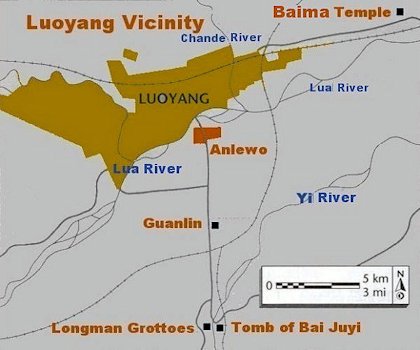
|
1. Luoyang Map After creating the Masterpiece of Buddhist cave art at Datong, the Northern Wei Dynasty moved its capital south to Luoyang in A.D. 494 and began construction of a second sculptural gallery, the Longmen (Dragon Gate) caves. The project turned out to be even more ambitious. Today, 2,300 caves survive, and 110,000 statues have been identified. More than half of the carvings at Longmen date from the much later Tang Dynasty period (A.D. 618--907), when Chinese art and sculpture reached its peak. Little is left of the old capital where Daoist founder Lao Zi ran the library 2,500 years ago; where the Han Dynasty Imperial College enrolled 30,000 of the nation's finest scholars in the 1st century A.D.; where the Northern Wei Dynasty opened 1,367 Buddhist temples; where the Sui Emperor connected his palace to the Grand Canal so that officials and merchants could sail from the middle of China northeast to Beijing and southeast to Hangzhou in the 6th century; where for 934 years Luoyang was truly the central point of the Chinese Imperial compass. ⇦ Back to Page 8 On to Page 2 ⇨Return to Luoyang Scenes |